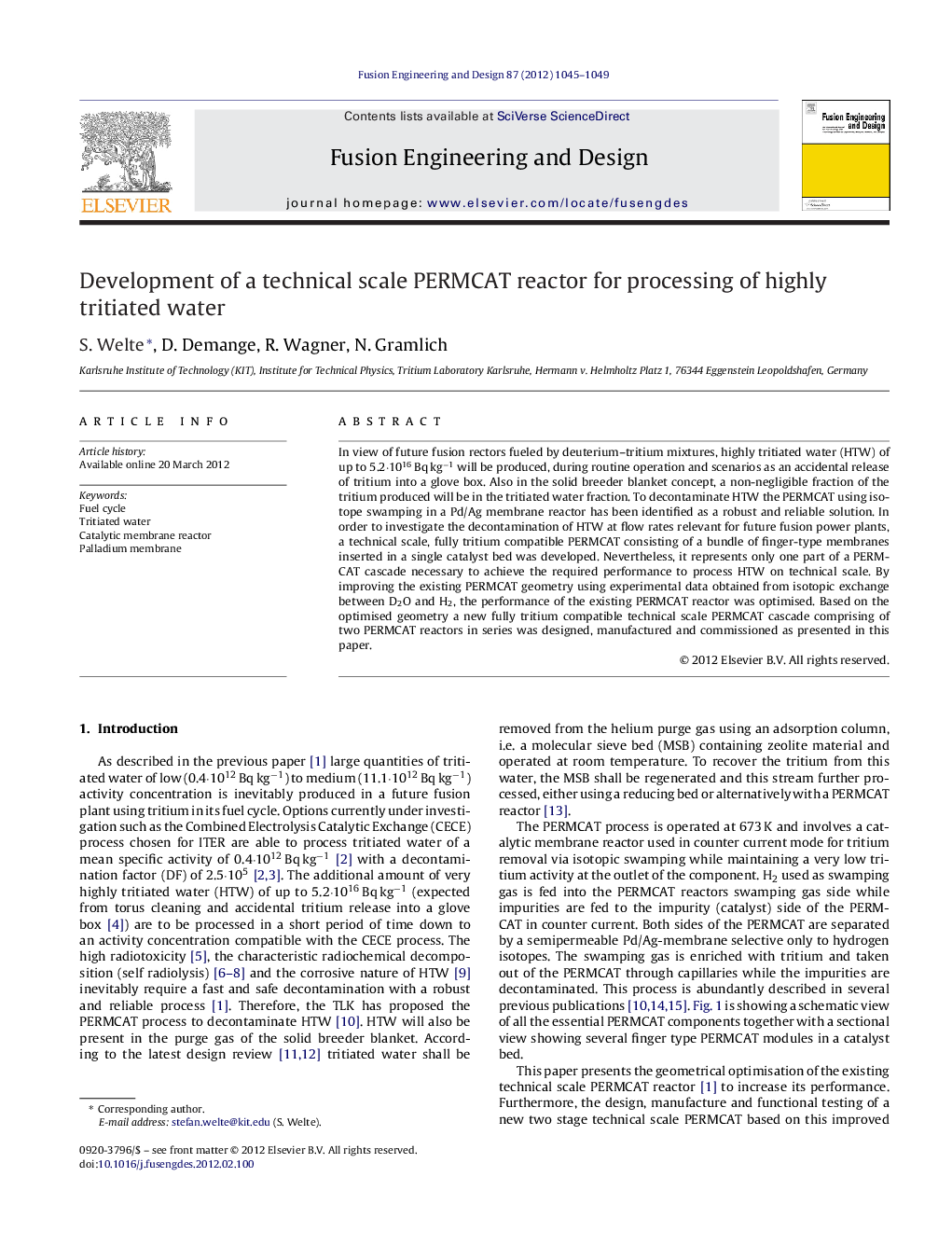| Article ID | Journal | Published Year | Pages | File Type |
|---|---|---|---|---|
| 272032 | Fusion Engineering and Design | 2012 | 5 Pages |
In view of future fusion rectors fueled by deuterium–tritium mixtures, highly tritiated water (HTW) of up to 5.2·1016 Bq kg−1 will be produced, during routine operation and scenarios as an accidental release of tritium into a glove box. Also in the solid breeder blanket concept, a non-negligible fraction of the tritium produced will be in the tritiated water fraction. To decontaminate HTW the PERMCAT using isotope swamping in a Pd/Ag membrane reactor has been identified as a robust and reliable solution. In order to investigate the decontamination of HTW at flow rates relevant for future fusion power plants, a technical scale, fully tritium compatible PERMCAT consisting of a bundle of finger-type membranes inserted in a single catalyst bed was developed. Nevertheless, it represents only one part of a PERMCAT cascade necessary to achieve the required performance to process HTW on technical scale. By improving the existing PERMCAT geometry using experimental data obtained from isotopic exchange between D2O and H2, the performance of the existing PERMCAT reactor was optimised. Based on the optimised geometry a new fully tritium compatible technical scale PERMCAT cascade comprising of two PERMCAT reactors in series was designed, manufactured and commissioned as presented in this paper.
► Processing option for highly tritiated water (HTW). ► Pd/Ag-membrane reactor optimisation. ► Technical scale, tritium compatible Pd/Ag-membrane reactor cascade design. ► Technical scale, tritium compatible Pd/Ag-membrane reactor cascade commissioning.
